Main story: Historical tours preserve and share Gilroy’s dynamic past
Casual monthly walks explore how city has evolved since 1800s
![]()
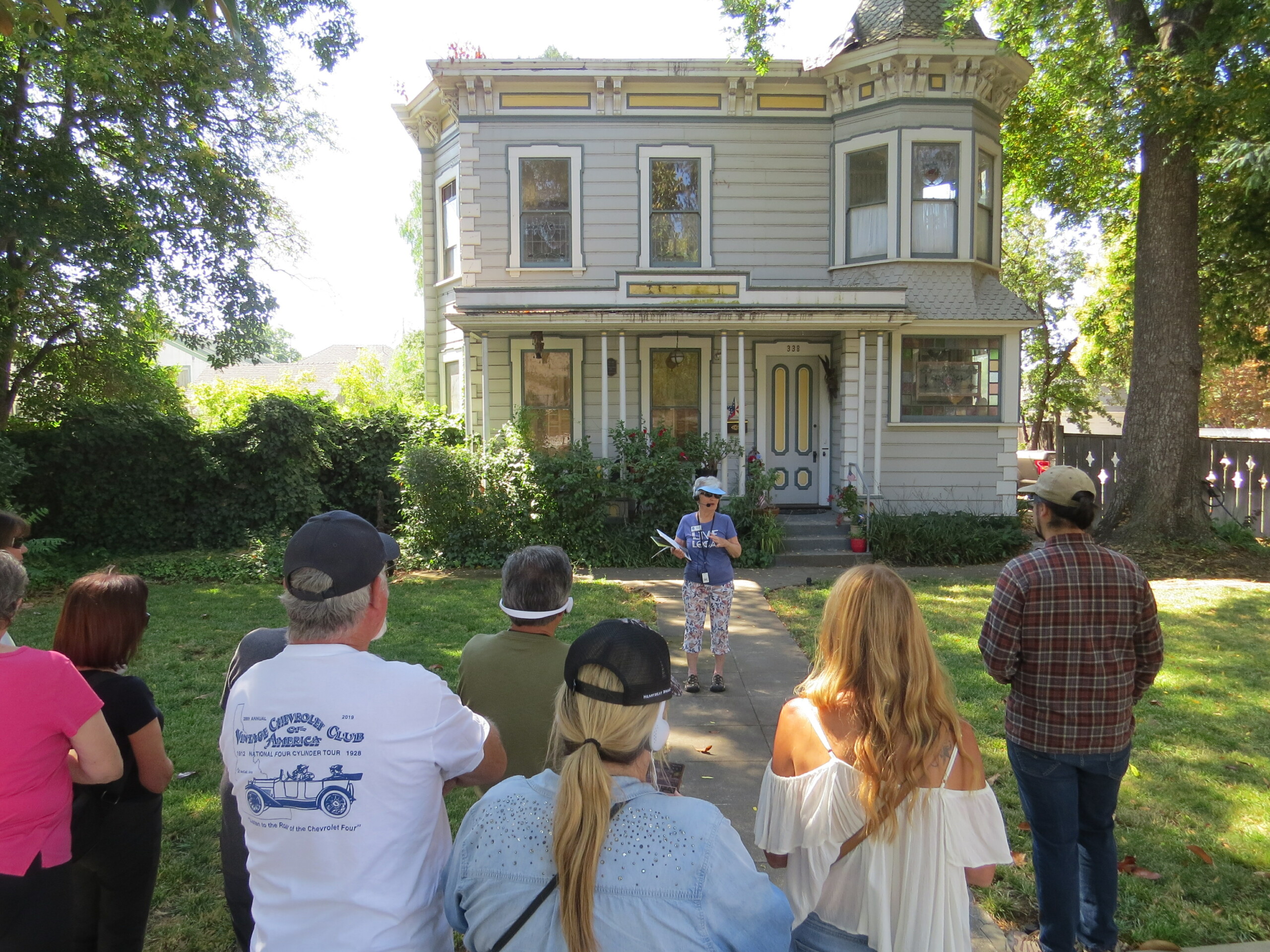
About two dozen residents joined Connie Rogers on a walking tour of Fifth Street Aug. 5 to view some of the unique architecture. Photo by Marty Cheek
By Calvin Nuttall
 In the dappled sun of historic residential Gilroy under the canopies of 100-year-old elms, a journey through time awaits the curious wanderer. Participants in Connie Roger’s monthly walking tour find themselves strolling sidewalks through a rich tapestry of the past.
In the dappled sun of historic residential Gilroy under the canopies of 100-year-old elms, a journey through time awaits the curious wanderer. Participants in Connie Roger’s monthly walking tour find themselves strolling sidewalks through a rich tapestry of the past.
In the two-hour morning walk Saturday, Aug. 5, the president of the Gilroy Historical Society shared with 26 men and women details about the diverse Victorian, bungalow, and craftsman homes lined up along Fifth Street. She wove together more than a century of evolving architectural history to tell the story of a town’s evolution.
“It is a little bit like reading the biography of the city,” Rogers said. “The walks help bring attention not only to the way we grew, but help people get more interested in Gilroy history. What happened here? How did we grow? Why did we change? We help people learn how the city grew up and why things are the way they are.”
The free tours take place the first Saturday nine months of the year. Most start at the Gilroy Museum at 195 Fifth St. Each focuses on a different area, including downtown’s business district, historical local women, “Old Gilroy,” and Gavilan Hills Memorial Park Cemetery. They serve as an excellent way to learn about the community while gettting a moderate amount of exercise.
Rogers organizes the schedule to fit with seasonal weather, so tour groups walk down sunny streets in colder months and through shaded neighborhoods during the heat of summer.
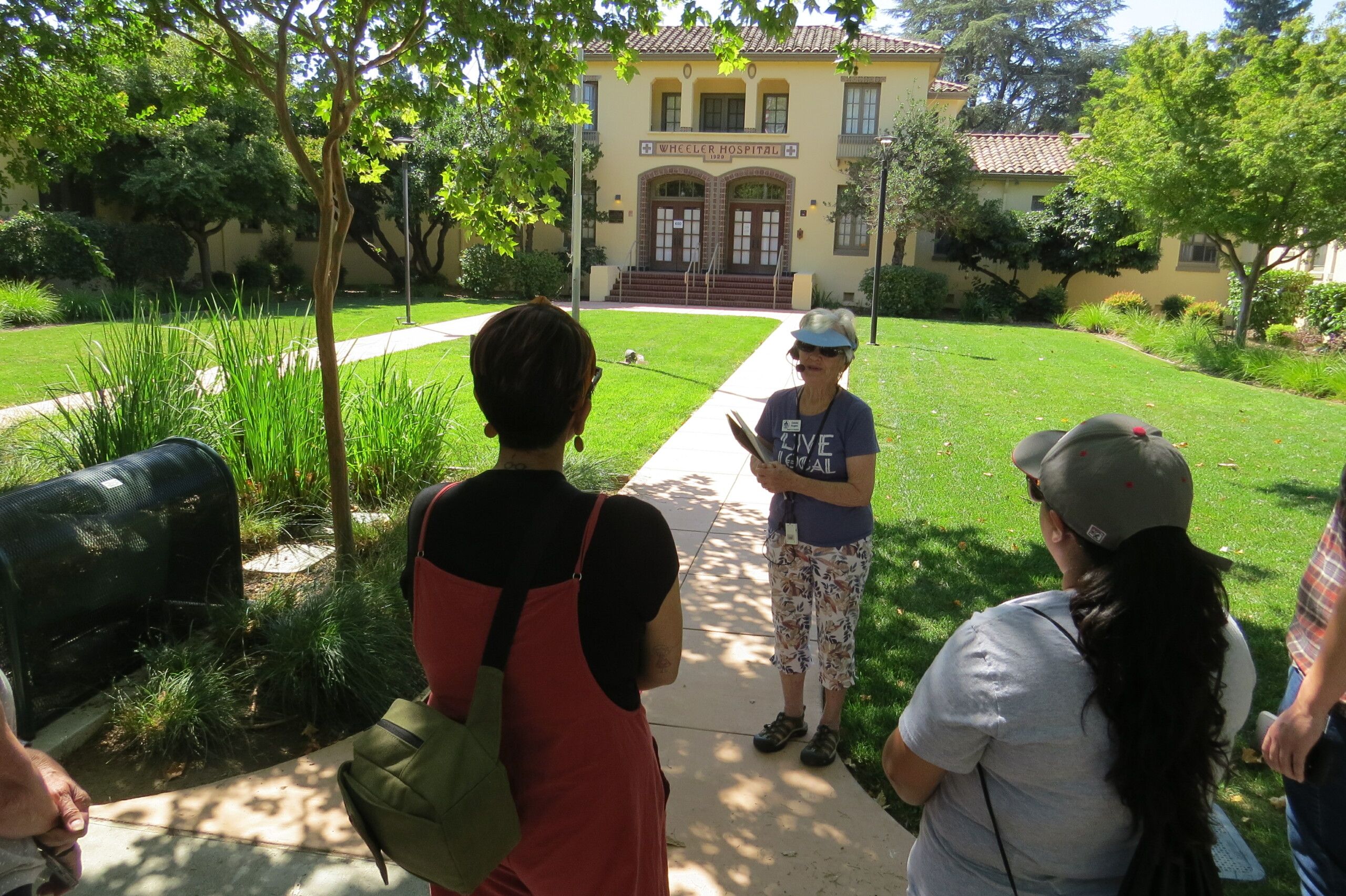
Photo by Marty Cheek
“I hope visitors will gain a greater appreciation of the history of Gilroy and how valuable a resource we have at the Gilroy Museum,” she said. “People who come on the walks aren’t necessarily regular museum patrons, but if they learn something that sparks their curiosity and they want to find out more, they can visit the museum at the end of the tour.”
Rogers provides not only factual information about the architecture and physical details of the historical buildings, but the human context as well.
“One man built a house as a wedding present to his daughter, for example,” she explained. “He ordered a kit and built it himself. Another house looks Victorian but is actually new, probably only 25 years old. That’s because whoever bought the lot decided to build a house that looked like it fit with its neighbors.”
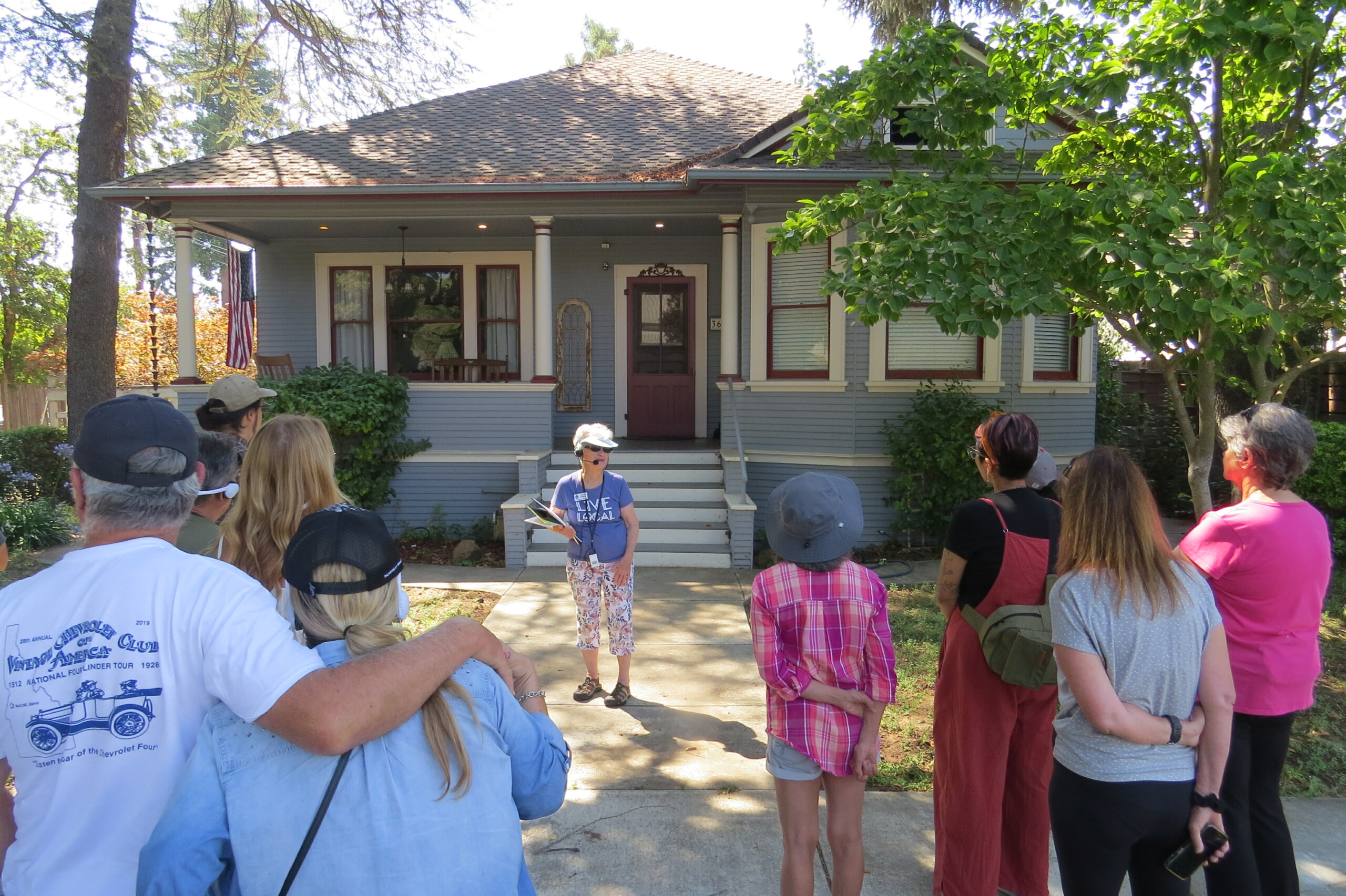
Photo by Marty Cheek
The tours are based on a historic buildings inventory that can be accessed on the city’s website. They’re supplemented by Rogers’ decades of accumulated knowledge and personal anecdotes. The inventory catalogs about 350 buildings of historical significance, though each tour visits only a fraction of those on its casual loop.
Recent residents and life-long natives alike are welcome on the tours, which offer something for every visitor, Rogers said. Newcomers benefit from personal context about their new community provided by long-term residents. Even people born in Gilroy will often be surprised by what they learn.
“We have people who have lived here all their life who want to visit the house where they grew up, and we also have people who are brand new to Gilroy who want to learn more about the place they live,” she said. “I learn a lot from the people on the walks, too.”
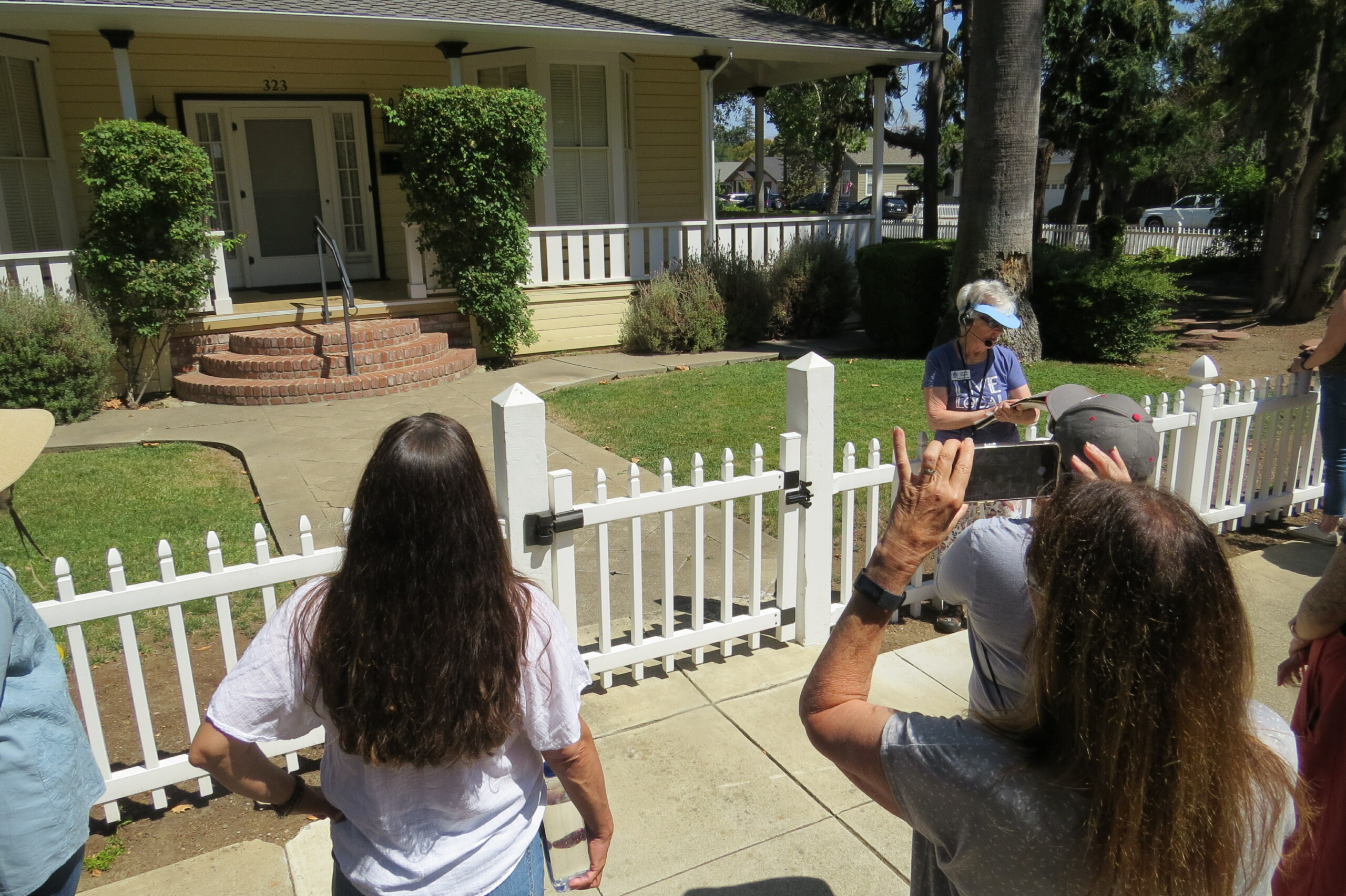
Photo by Marty Cheek
Born and raised in Gilroy, Russell Sosa, 70, delights in learning the deeper history of the less-frequented parts of the community.
“I’ve been here forever, but I still learn a lot about the history of Gilroy by taking these walking tours,” he said. “Connie and the museum do a great job as far as having all of the dialogue on each house and its significance. Newcomers can get the gist of the history of Gilroy. It’s not just a place to commute to San Jose from, but it’s a place to live and intermingle with people.”
A comparatively new resident, Karen Hill moved to Gilroy 10 years ago when her daughter became a third-grade teacher at Glen Valley Elementary.
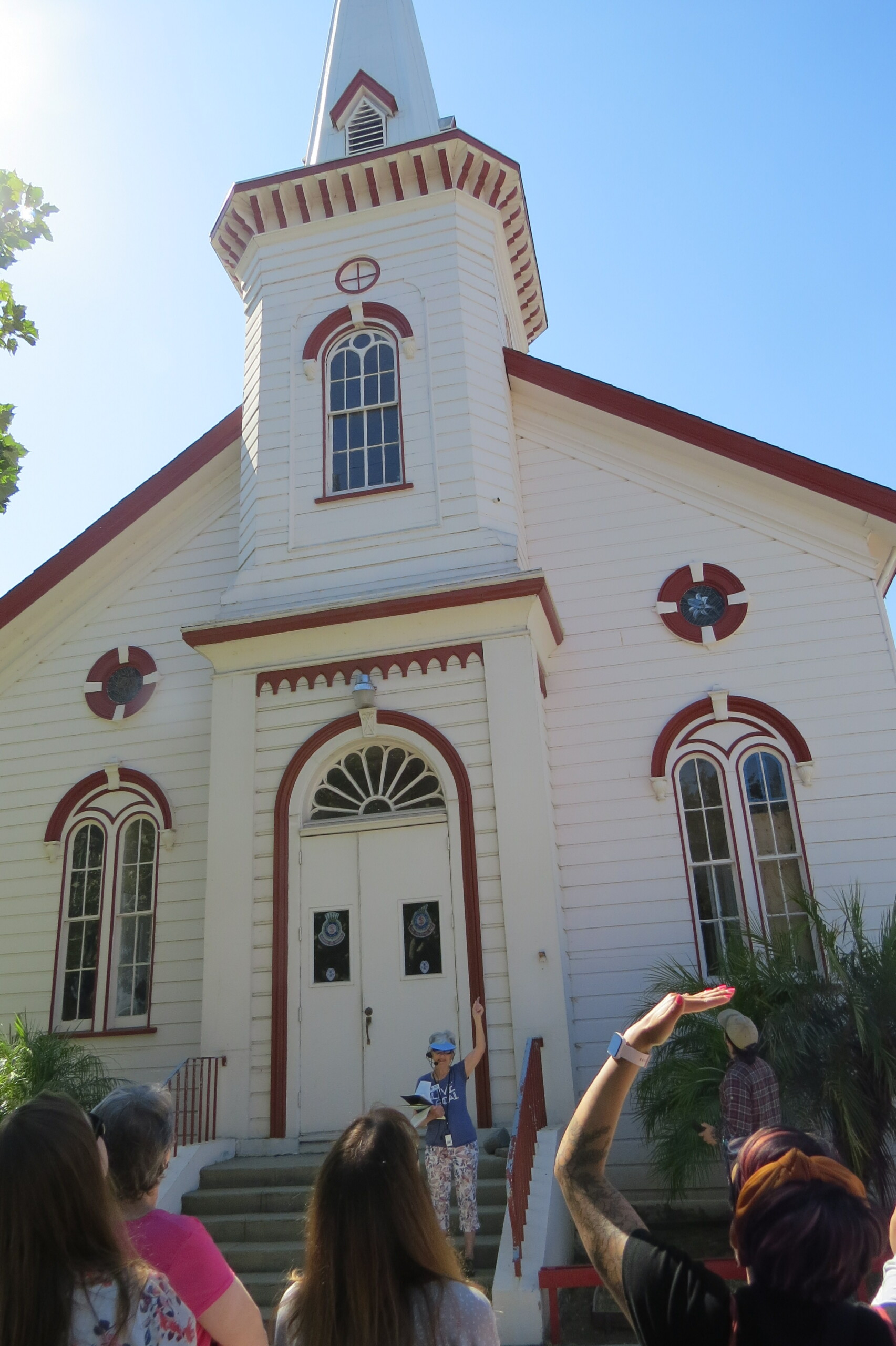
Photo by Marty Cheek
“I’m originally from Long Island, New York, but I’ve lived all over the country and in Canada. Gilroy is my favorite place I’ve ever lived,” she said. “It’s nice to see something that is older than I am. I just enjoy the history of it. I really just like Gilroy and the small town-ness of it, and I think if more people got involved on these walks they would appreciate more of what Gilroy has to offer. There is a different feeling in Gilroy and I would love to see that nurtured. There is a rich history here.”
This year’s remaining tours will take place Oct. 7 and Nov. 4. The first tour will highlight 15 buildings designed by William H. Weeks, a prolific architect who designed hundreds of noteworthy buildings in the 19th and early 20th centuries, including the Gilroy Carnegie Library, the Milias Hotel, and Wheeler Hospital. Participants meet in front of the Gilroy Museum at 10 a.m.
The November tour is different. Instead of walking through the public areas of town, this tour takes place at Old St. Mary Cemetery, a hidden treasure trove of historical knowledge of pioneers. Participants meet 10 a.m. Nov. 4 at St. Joseph Family Center at 7950 Church St.
Little known by locals, the cemetery holds the well-weathered graves of many of South Valley’s founding pioneers. Gilroyans will recognize many of the engraved names also honored on local streets and avenues.
“Old St. Mary Cemetery is without a doubt our most popular tour,” Rogers said. “Not only is John Gilroy buried there, but Father Hudson, the founder of the parish, José María Amador, who Amador County is named after, and Caroline O’Toole Murphy Dunne, with her first and her second husband and all of their children.”
 Long disused, the cemetery is undergoing its second restoration. In years past, it was heavily overgrown and held many unmarked graves, their wooden markers rotted away. Through a coordinated effort including Rogers — as well as history-loving citizens Chris Hernandez, Jimmy Habing, Dave Peoples, and Mike Hughes — the graveyard has been significantly renovated.
Long disused, the cemetery is undergoing its second restoration. In years past, it was heavily overgrown and held many unmarked graves, their wooden markers rotted away. Through a coordinated effort including Rogers — as well as history-loving citizens Chris Hernandez, Jimmy Habing, Dave Peoples, and Mike Hughes — the graveyard has been significantly renovated.
“People would go on the tour and they would be very upset that the cemetery was neglected,” Rogers said. “The city put in new LED lighting, the diocese trimmed the trees, and we erected a better monument to John Gilroy and a new sign for the cemetery. We were able to get records from the church of who was actually buried there and a plot plan, so Dave and Mike have been identifying the unmarked graves and putting in new markers for them. He has discovered about half a dozen more members of the Gilroy family, and others.”
Calvin Nuttall is a freelance reporter and Morgan Hill resident.

